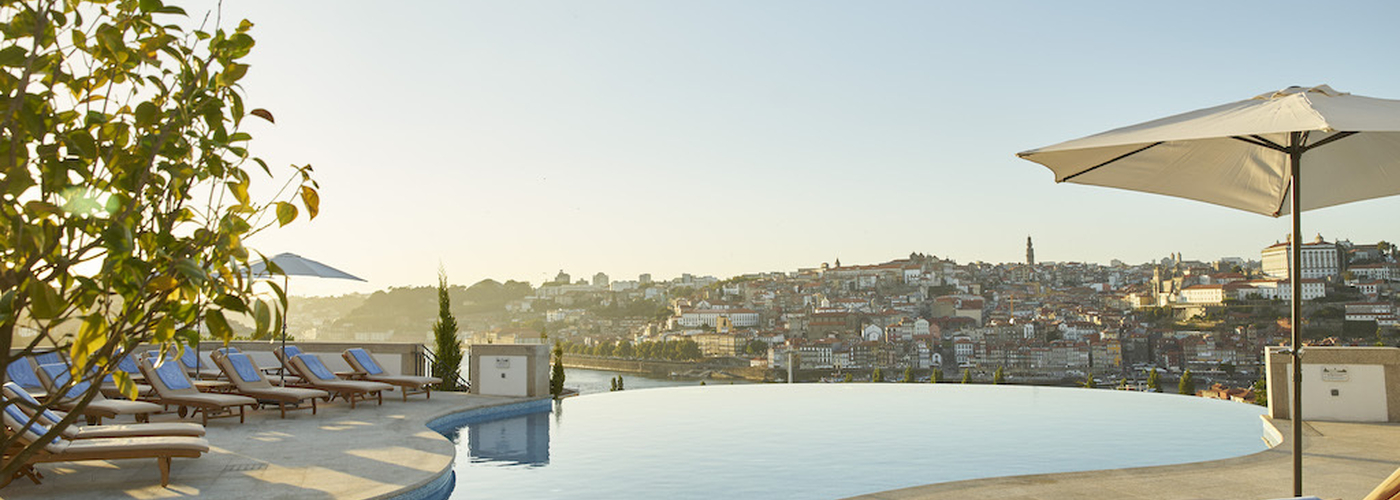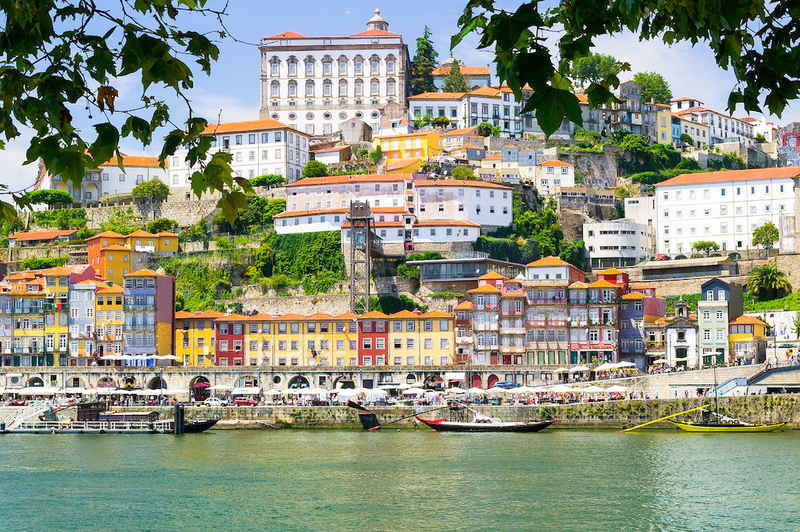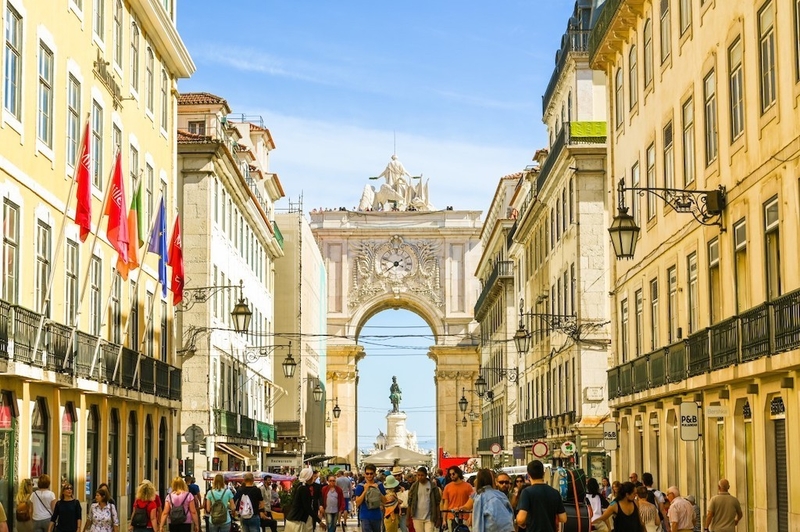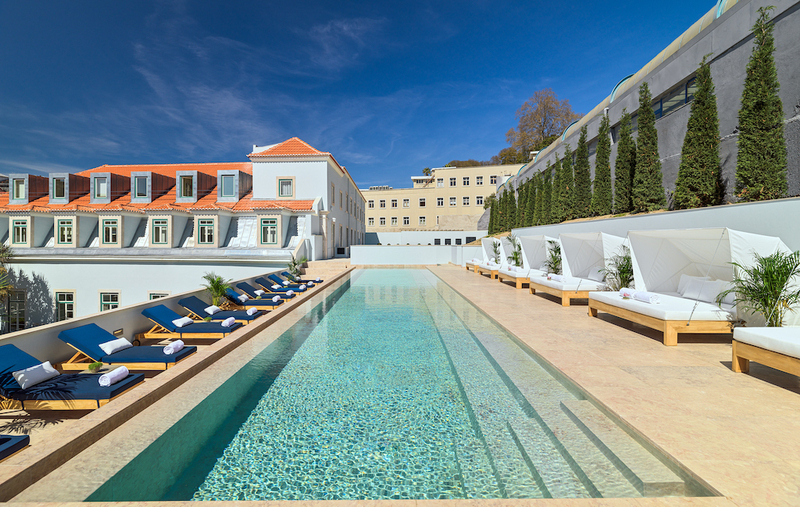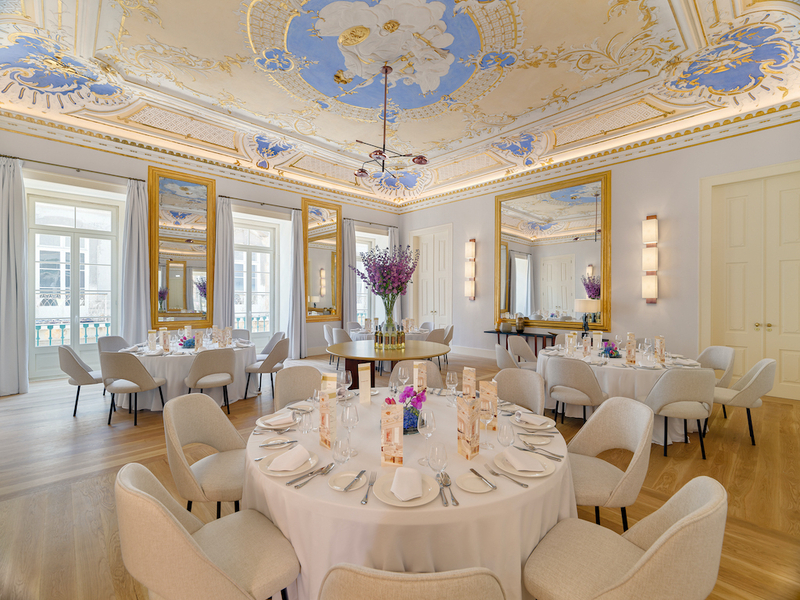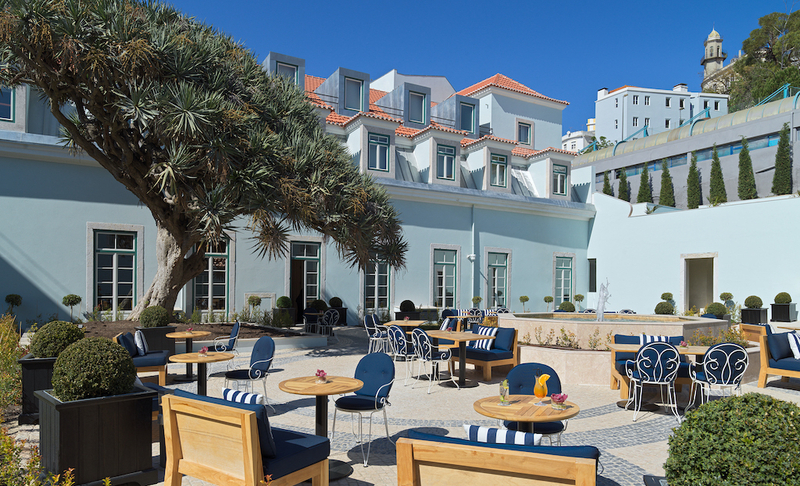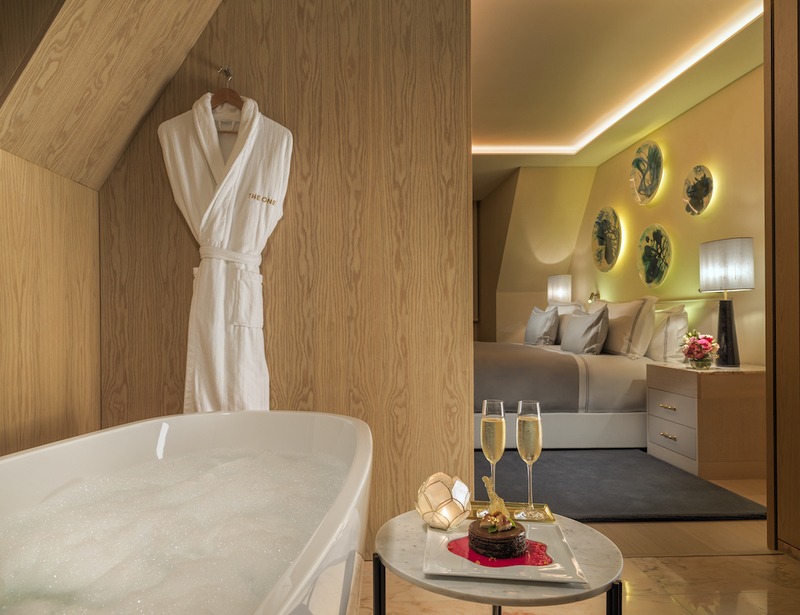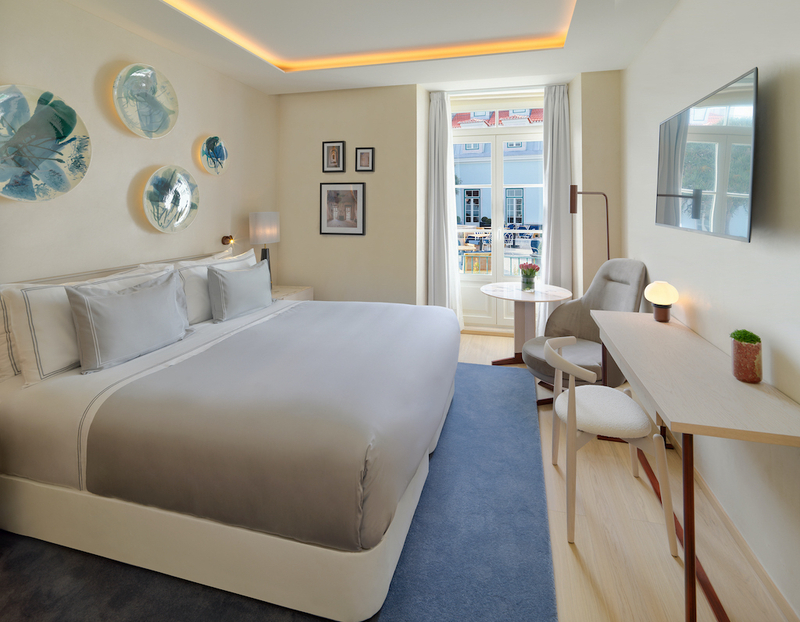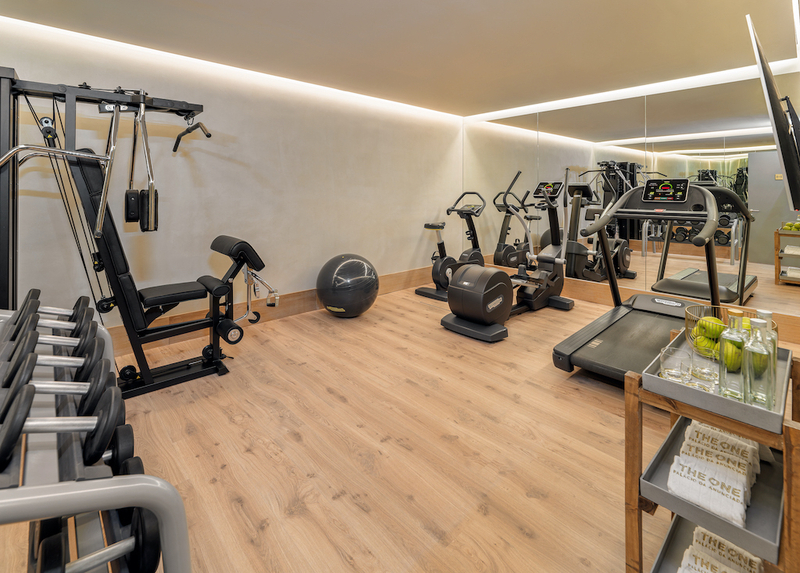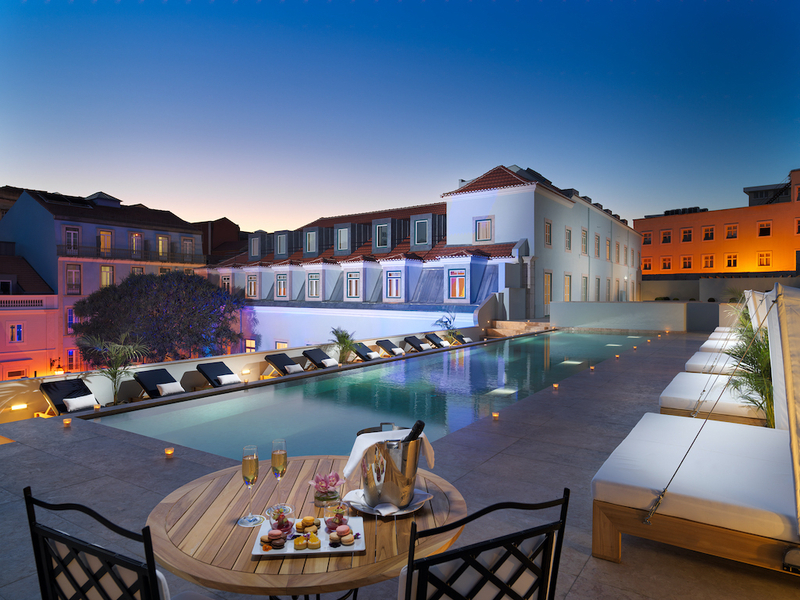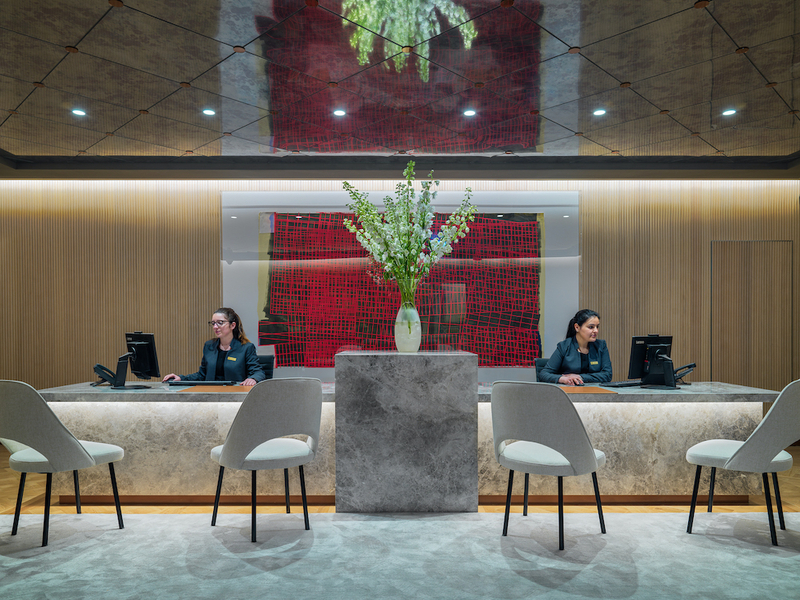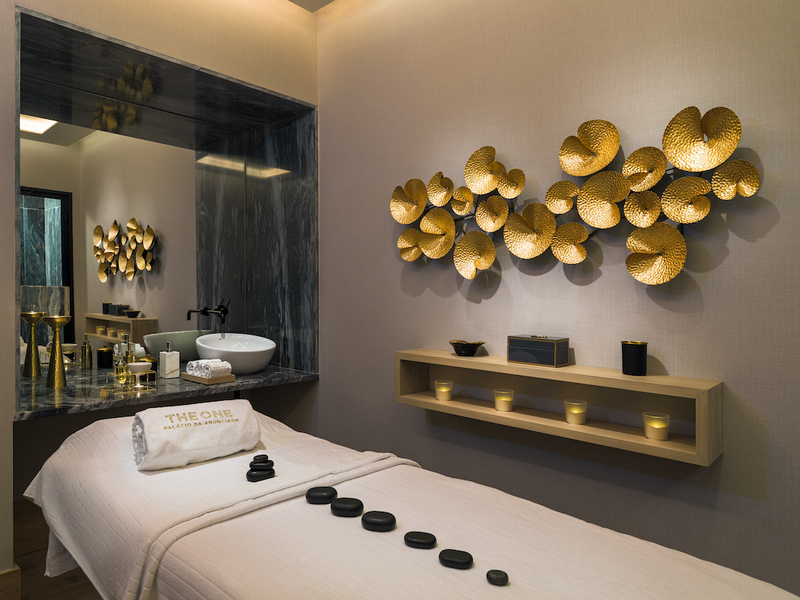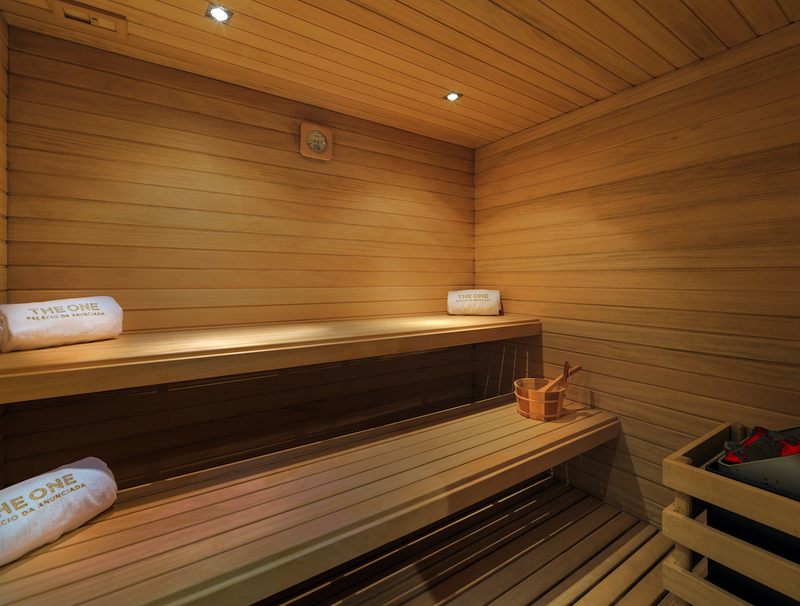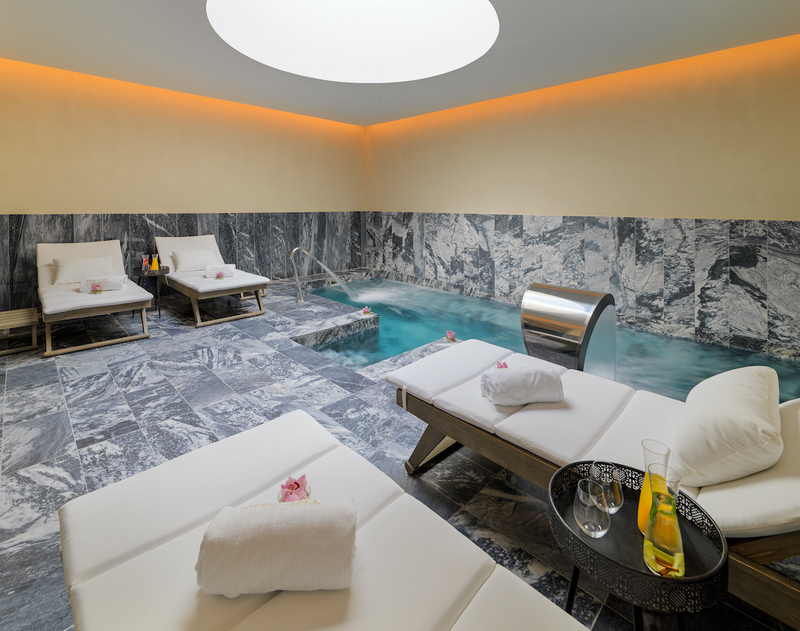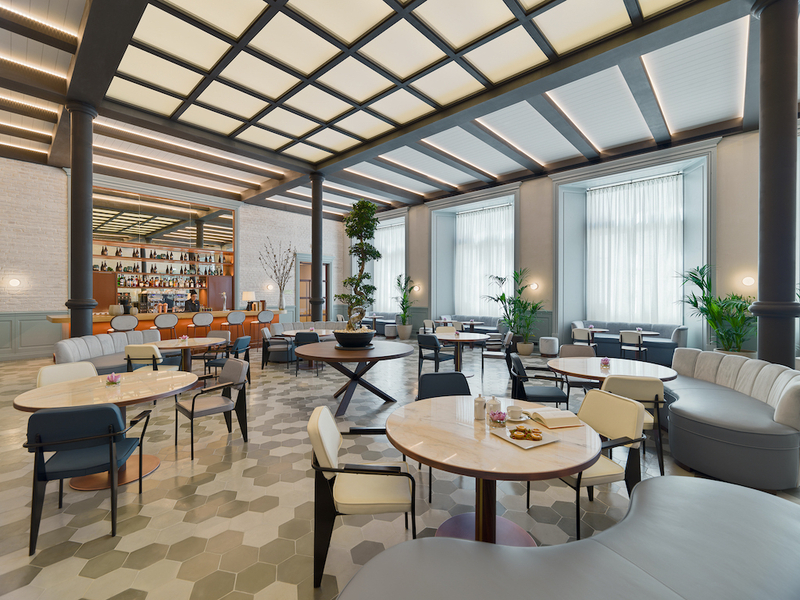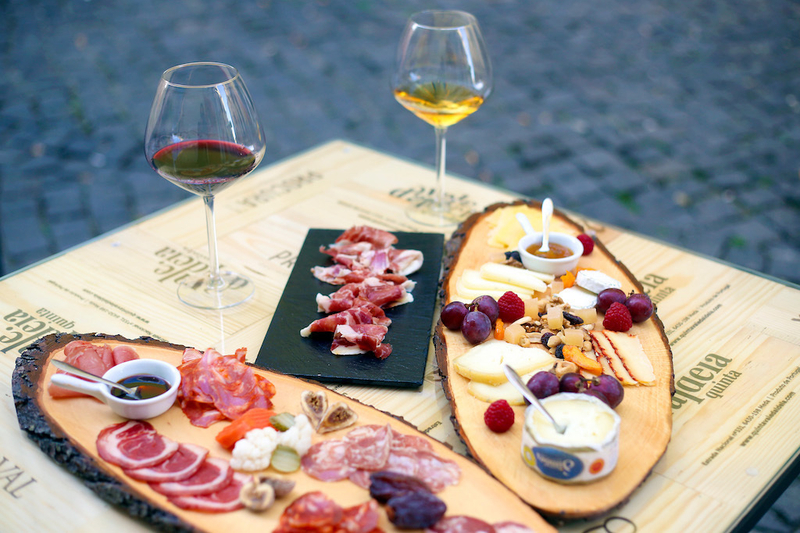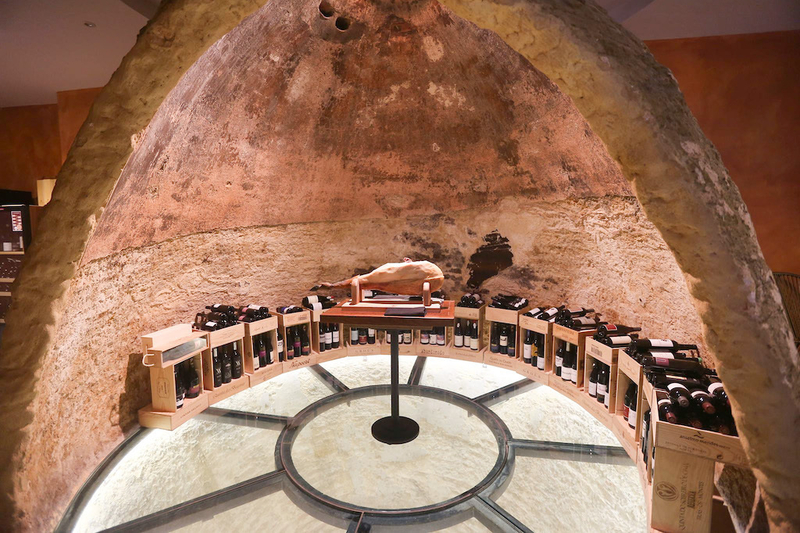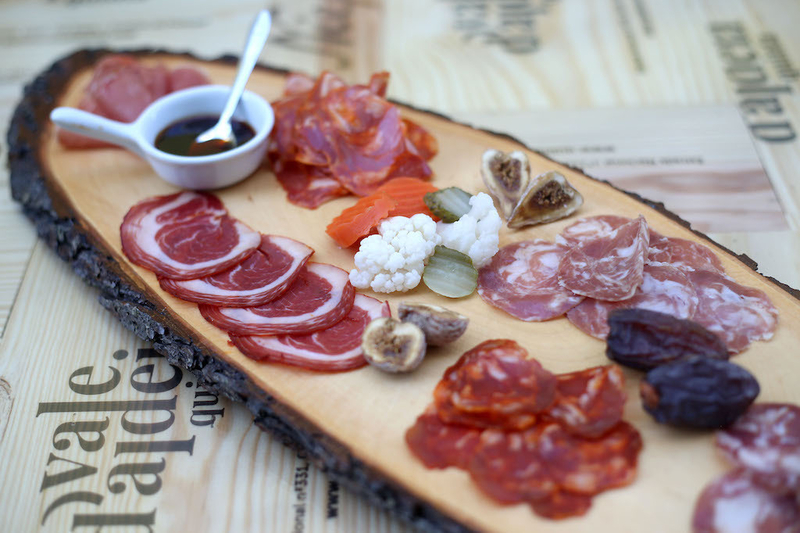Vicky Smith finds enriching experiences and top lodgings with a special local company
This article was written in March, before the COVID-19 lockdown. Restrictions have now been lifted for UK travellers to Portugal and flights are operating (with health screening on arrival) once again. Those returning to the UK currently have to self-isolate for 14 days, however this is constantly under review.
Eating and drinking establishments have opened; as have tourist attractions, beaches and shops. As in the UK face masks are required in some areas, and Portugal Tourism has introduced a ‘Clean and Safe’ stamp to identify providers that are compliant with COVID-19 health and safety procedures.
Vicky Smith travelled with Iberian Escapes, a specialist company that creates experiential holidays using local operators it has personally vetted. Its team will be able to assist with any health and concerns, leaving you to look forward to a safe and memorable trip.
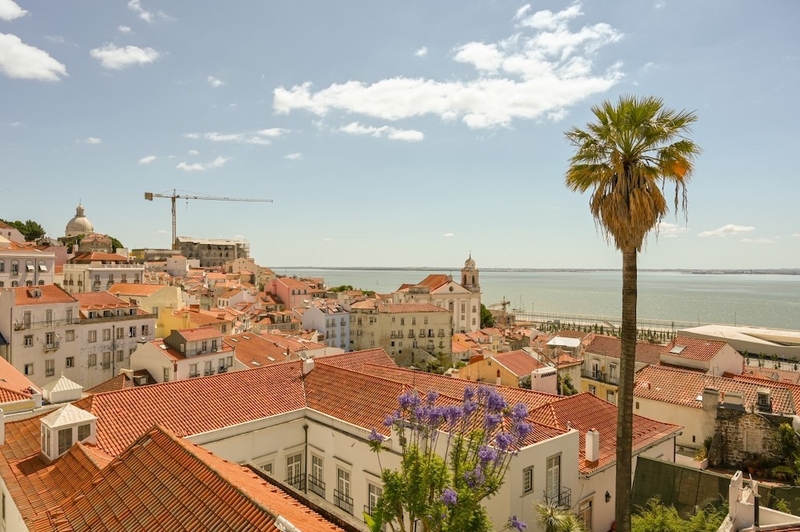
I adore Europe, and consider myself very much European: Brexit may try to persuade us otherwise but it can’t dispute the geography. Until recently, however, something was missing from my travels on the continent.
There were two exceptions: Spain, where I have friends and speak the language; and my grandma’s native Poland, enjoyed with relatives as she took a meander down Memory Lane. While other countries had charmed - with their arts, culture, history, nature - I craved this deeper connection, a perspective that sidestepped the tourist mainstays and questionable review sites...yet didn't know how to achieve it.

On hearing of Iberian Escapes - ‘a bespoke luxury concierge destination management agency that specialises in high-end tourism, tailor-made events and experiential travel holidays in Portugal and Spain’ - I (correctly) predicted some top-notch dining and accommodation. But what was the significance of ‘experiential’?
By the time I returned from a superlative few days in Lisbon and Porto, I'd realised the answer lay in local people; from two women trying to save Portugal's threatened tile heritage to a guide with unrivalled knowledge of Lisbon's backstreet dining treasures. This was experiential, this was the missing puzzle piece in my European jaunts...and with Iberian Escapes, it was central to a trip that felt like seeing Portugal in high definition.
Owing to limited time, our Iberian Escape blended elements of two longer itineraries - Tasty Traditions & Tuk Tuk Tour in Lisbon and Art & Architecture in Porto. Customers can choose from suggested packages like these, mix and match like we did or even request something new altogether. As for us, a tale of two distinctive cities awaited. First up, Lisbon...
I've mentioned standout lodgings is an Iberian Escapes trademark, so it's perhaps unsurprising that our gastronomic gallivant around the capital began by checking into The One Palácio da Anunciada, arguably its most sensational new hotel. This converted 16th-century palace partners 5* amenities with a tasteful meld of classic and contemporary; think outstanding period features, stained glass and an abundance of modern art. From the opulent check-in (complete with Champagne and sweet treats) to dinner in the exquisite restaurant on our last evening, its palatial heritage was exemplified throughout.
Although blissfully quiet, The One's central location makes city exploring a doddle too. It was a five-minute stroll to our first encounter, an epicurean tour of Lisbon spanning a cosy jasmine-scented taverna in Mouraria to a historic deli known for its bacalhau (which, despite the Portuguese having a cod recipe for all 365 days of the year, is surprisingly imported in).
Accompanied by our enthusiastic guide Madelena, we sampled everything from Alentejo wine to Azores cheese and even samosas, reflecting Portugal’s Goan ties with India. One stop, famed for its sour cherry liquor and propped up by gossiping senhores, was the tiniest watering hole I’d ever seen; plastered with posters from football to fado and still sporting an incongruous Christmas tree in late February. You wouldn’t find that on TripAdvisor, proof we’d left the tourist trail far behind. Covering three areas, with a light commentary on Lisbon’s history and culture, it was factual and flavoursome. Finale? Surely the world’s best confectioner of Portugal’s iconic pastéis de nata (custard tarts).
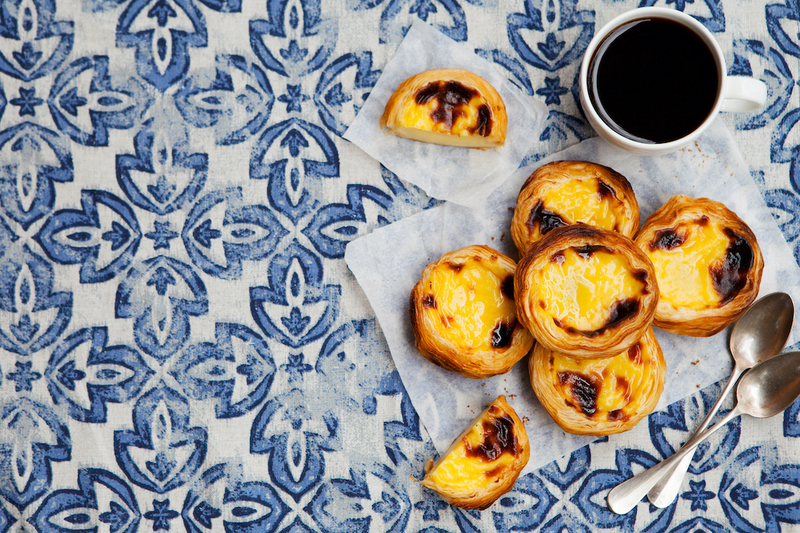
As day darkened into evening, we bid farewell to Madalena at one of Lisbon’s leading wineries, noted for its unique insights into Portugal’s most popular tipple. I know as much about wine as Trump does diplomacy, and can feel a little intimidated by serious oenophiles, but our host made the subject engagingly accessible with her wit and passion (in fact, our group agreed she deserved a TV show). We sampled five wines, finishing off with a superb tawny port whose butterscotch flavours even I could detect, meanwhile learning about some of Portugal’s 300+ grape varieties and taking in the winery’s magnificent 16th-century cistern. Here you’ll also find legendary grazing boards, from cheese to charcuterie and breads with a mind-boggling array of olive oils.
Happily sated, we wended our way back to The One for a restorative rest before the adventures to come.
Think rickshaws are the preserve of Asia? I did until the next morning, which saw us tour Lisbon tuk tuk-style. With a lively commentary from the amiable driver, who also pointed out many key sights, this certainly beat Google Maps for getting our bearings and the vehicle was comfortable and roomy; nothing like some of the hairy ones I’ve rode in India. Fortunately a pesky rain shower retreated as we reached what is possibly the city's best viewpoint - a jumble of terracotta tiled roofs divided by the Tagus river and its majestic ‘Golden Gate’ suspension bridge, all presided over by São Jorge Castle - just before midday.
Despite lunchtime hunger pangs, I had reservations about our subsequent cooking class (let's just say cooking isn’t my forte) yet this turned out to be another rich foray into local culture: from visiting the neighbourhood market, packed full of produce both novelty and familiar, to learning surprising facts like tempura is actually Portuguese. Preparing was luckily a collaborative effort, done in a spacious high-spec kitchen nearby, painless even for me. Aprons off, we sat down to the likes of caldo verde soup, cataplana (like fish stew) and sericaia, a kind of Portuguese egg pudding. Buon appetito indeed.

The rest of the afternoon was spent at leisure walking off our four-course feast through Lisbon’s maze of scenic cobbled streets, many lined with pastel buildings or facades tiled in azulejos. While the capital has some spectacular sights, from Santa Justa lift to the Neo-Manueline Rossio Train Station, much of its pleasure comes from simply wandering the diverse neighbourhoods; Moorish Mouraria and bustling Alfama and Chiado to name but three. Just one piece of advice? Wear good shoes. The Portuguese obviously have a fancy for hilly cobbled cities, Lisbon and Porto being prime examples.
Alas, following a stunning dinner in The One Palácio da Anunciada restaurant, our Lisbon adeus had come. Morning saw us driven to Santa Apolónia railway station, where we boarded the three-hour train to Porto wondering if our time there could possibly compete (spoiler: it could).
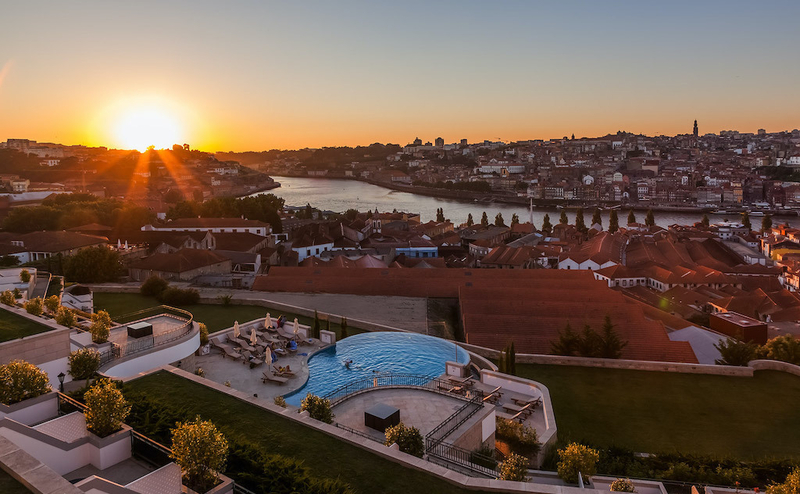
Our fears were assuaged on arriving at The Yeatman, arguably the region’s most iconic hotel, where we were dropped off by our driver outside the lavish neoclassical lobby. Situated in Vila Nova de Gaia, next to the ancient ‘lodges’ in which Port houses have aged their wines for over three centuries, it’s named for the enterprising Yeatman family - who entered the trade in 1883 - and commands an unparalleled view of Porto across the Douro river from all rooms.
Renowned for its award-winning spa and wine facilities (the spa even has wine-related therapies), The Yeatman boasts everything from extensive cellars to tastings and vineyard visits. Other offerings span seven acres of landscaped grounds to themed exhibits on each floor, an artisanal shop and integrated features to help reduce environmental impact. Oh and a two-Michelin-starred restaurant naturally.
After we’d settled in, it was a two-minute amble down the hill for a late lunch at Barão Fladgate, in the grounds of Taylor’s Port cellars. Named after Baron John Fladgate, the celebrated 19th-century Port shipper and partner of Taylor’s, this atmospheric restaurant has been infusing Portuguese cuisine with global contemporary influence for over two decades and offers both casual and fine dining options.
Here we enjoyed the likes of cod fillet with pea cream and bísaro pig bacon, plus quite possibly the world’s best apple tart, meanwhile taking in panoramic views of Porto and a humorous spectacle when three peahens filed past the window followed by a rooster. Mistaken identity?
A mooch across the courtyard then took us to Taylor’s Port cellars itself, where an informative self-guided tour takes visitors behind the scenes of the region’s famous fortified wine. As with most things round here, proceedings happily end with a Port snifter.
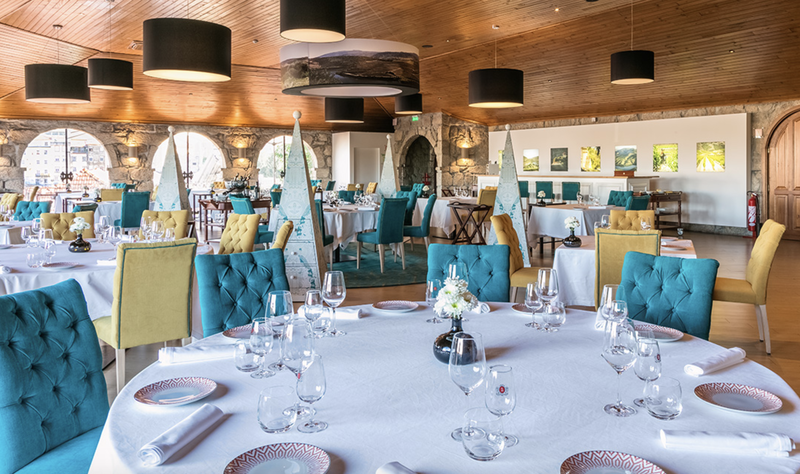
With so much eating and drinking, I was glad of the exercise afforded by The Yeatman’s hilly position. After an explore along the river, where popular options include Rabelo boat cruises and the only bridge climb in Europe, we ascended the steep cobbled path back to the hotel for some luxury downtime. What an introduction…
The following day was sadly our penultimate in Portugal, but boy did we make the most of it. First on the agenda was a tile-painting workshop whose owners, two affable female friends, are on mission to catalogue all of the tiles in Porto. Facades decorated with patterned azulejos have been part of Portuguese heritage since the 14th century, but this ancient custom is threatened: factories have largely taken over traditional hand painting, and modern tastes mean even they’re starting to close.
After telling us about their fascinating project and why it’s so important, our hosts explained how to paint our tiles using premade stencils (strangely therapeutic) and helped us refine our patterns before firing. As seemed to be a common theme on this trip, something I’d never have considered doing myself proved to be a valuable insight into the country's culture.
Fortunately, seeing as lunch saw some of us try the ‘Francesinha’ (a gargantuan sandwich, like a Croque Monsieur on steroids), next up was an afternoon walking tour of Porto.
So distinctive is the centre of this northern coastal city that it possesses UNESCO World Heritage status. In Cais da Ribeira, tall multihued merchants’ houses line the Douro - evoking a 17th-century postcard with their vintage patina and intricate wrought-iron balconies - while the river is traversed by several bridges, one designed by Gustave Eiffel. Narrow cobbled streets (what else?) snake upwards into districts with their own array of sights, from regal squares to Delft-like churches clad in blue and white tiles. Even the McDonald’s we stopped at for a toilet break is gorgeous, housed in an Art Deco former cafe replete with stained glass and chandeliers.
Other sights we visited included Sao Bento Railway Station, whose stunning tiled interior depicts key historical events; Clérigos Tower, probably Porto’s best known landmark; and the magical Lello Bookstore, which partly inspired J.K. Rowling’s vision for Hogwarts.
Our Iberian Escape had dunked us headfirst into Lisbon and Porto’s vibrant culture, but one final thing remained…fado. This UNESCO-protected music, characterised by its mournful rhythm and nostalgic lyrics, originated in working class maritime communities but nowadays is integral to Portuguese heritage.
Hence why our final evening was spent in Casa Mariquinhas, a cosy restaurant renowned for its fado shows. Flanked by two extremely talented guitarists, the two singers - first a man, then a woman - performed a variety of melodic songs, each dressed in the customary black. No doubt the wine (and later Port) helped but, while admittedly not to my musical taste, I found the whole experience bewitching.
And so, with those last doleful notes, effectively came an end to our trip; one on which I’d solved the puzzle of really experiencing Europe.
Fact file
There are regular direct flights from Manchester to Lisbon, as well as other Portuguese destinations, with airlines including TAP Portugal and Ryanair.
Restrictions have now been lifted for UK travellers to Portugal and flights are operating (with health screening on arrival) once again. Those returning to the UK currently have to self-isolate for 14 days, however this is constantly under review. Eating and drinking establishments have opened; as have tourist attractions, beaches and shops. As in the UK face masks are required in some areas, and Portugal Tourism has introduced a ‘Clean and Safe’ stamp to identify providers that are compliant with COVID-19 health and safety procedures. For more info, visit gov.uk and visitportugal.com.
Vicky Smith travelled with Iberian Escapes; a bespoke luxury concierge destination management agency that specialises in high-end tourism, tailor-made events and experiential travel holidays in Portugal and Spain. Based in Vilamoura, the British family company infuses each itinerary it creates with outstanding knowledge of the region and its hidden treasures.
Find out more about Iberian Escapes on the website or call +44 808 189 0647.




